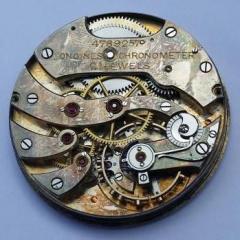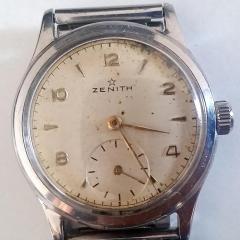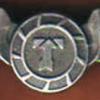Leaderboard
Popular Content
Showing content with the highest reputation on 09/12/17 in all areas
-
After servicing, cleaning , installing new crystal, new mainspring, and winding stem, I have to wait for the hands from ebay. So I decided to check for magnetism with my little compass. I looked all over the place for my tiny cracker jack toy compass and finally found it stuck in the back of a little used drawer. I lose this thing all the time. So I went to Esslinger to buy one i couldn't lose. The wanted $68 for one in a little wood box plus tax and shipping. So I sat down and made a case for my toy compass out of scrap wood and cheap hardware. Here it is next to my Illinois 12s 19jewel pocket watch that is waiting for hands.3 points
-
Use a jewel press, not a staking kit, as the placement of the fork vertically on the staff is critical... there are pallet staff pushers available for all of the jewel presses (Horia, favorite and seitz) T3 points
-
With the SF You adjust the beat error. Do this first! Then with the other one adjust the rate2 points
-
This question may sound a bit foolish but I thought I'd throw it out there anyway. I've noticed on American pocket watches the banking pins are adjustable but I'm a bit perplexed as to why this would be necessary. I'm also wondering what the effect would be should one go in and adjust those pins.1 point
-
There is not enough amplitude (bare minimum 200 deg. on Swiss mov.t) to make it run reliably. The wavy pattern indicates that the mainspring struggles in providing constant power. The watch might be able to keep good time, but that would be a lucky occurrence. Certainly you did a good job in regulating for a first time.1 point
-
Yes, you can because they are the same. And the mov.t ring is the same no matter the crown position, it only changes in two heights. Below a reference that I've prepared with the parts variations between versions. https://docs.google.com/spreadsheets/d/e/2PACX-1vRN2UULQKTfKmhRStZhDdIOIQrqd6sPB-g6x2SKyQQjOvTBjG_7TQXQhAT4f1WqAX5QAPkIimi-3jqd/pubhtml1 point
-
I'm also wondering what the effect would be should one go in and adjust those pins. All hell would break lose. It might not escape, it could overbank, there could be no way of regulating the power, all the power could just run down, balance wheel action would go bananas. This is just a few of the major reasons why you should not play with the banking pins unless you know what you are doing.1 point
-
I've had a Waltham where the adjustable pins were played with and it was JohnR725 that helped me make the necessary adjustments. I think a lot of these issues are caused by would be watchmaker trying to remove the pins as part of servicing. The American makers at the time made great emphasis on parts being interchangeable but I haven't found this so, certainly within the escapement and think there was still quite a high degree of hand fitting and adjustments of parts Sent from my SM-T585 using Tapatalk1 point
-
I can't say that Ive encountered a vintage watch with the lever that you usually shouldn't touch being in the wrong position so far but it can happen, obviously. I'm assuming you just have to set both of them in such a way until you get it right but I do believe that you should first disassemble, clean and service the movement firstly and only afterwards "play" with the levers although you might just have to adjust the regulator.1 point
-
That was developed by a member here and the video is made by me Here is the topic for details1 point
-
A measure of the mainspring gives me 0.95 x 0.115 x approx 400 with barrel diameter being 10.5mm so that looks pretty close to me.= I will try and resuse the original spring, but first I need to make some spacers for my mainspring winder as it is made for much taller springs.1 point
-
Just in case, I came across this "Watch-O-Scope" software. To those who have a need for it. Also here is an instructional video how to install. I hope it will help somebody here.1 point
-
1 point
-
Photo's always good it helps understand the question. You shouldn't have to change anything. Just put the 7s36 in the 7s26 movement ring and a fix dial and everything should line up Sent from my SM-G920F using Tapatalk1 point
-
The best type of machine I have found to make tiny watch staffs and pinions is a watch lathe. The major issue I ran into was having the pinions break off after being turned down past .012 inches or less. A mini lathe has more mass and power with a trade off of less "feel". It was designed for larger size parts, such as clock parts, and can remove metal faster by taking larger cuts. Also, due to more size strength and power, a larger lathe will have less deflection from the cutter pressure thus providing more repeatable accuracy on each cut. That said, no matter how accurate the larger machine is, trying to turn a part down to .004 inches (.1mm) can be difficult or next to impossible due to overpowering the part. Larger parts can, in theory, be made on a watch lathe but a larger more stable lathe would be the better way to go for larger work. If you are going to use the machine to make watch parts (particularly staffs, pinions, stems, tiny screws etc.) I think you will find the watch lathe a better way to go. As I mentioned in previous posts, the Sincere Lathe is the going to be the best and most affordable option for this type of machine. You can always, at a later date, purchase a larger lathe in addition to this to make larger parts. I would also like to mention that some watchmakers will turn the pinion down as far as they can with the turning process and then grind or file it the rest of the way on a Jacot Lathe. This is generally not recommended as it can affect the concentricity and cylindrical properties of the pinion. The final burnishing on the Jacot Lathe should only be used only for the final .01mm -.02mm. This is the difference between making a pivot and making something that looks like a pivot to the naked eye. david1 point
-
Oh cool, an update on your adventure!!! I always look forward to those. Do you get anything special for graduation? At least a nice looking diploma I hope!!! Congrats1 point
-
Use this link and with the cal number you have you should be able to find the part number you want. Parts might look the same but many won't fit. http://www.incabloc.ch/en/pieces_rechanges.php1 point
-
You can get a new 955 with date ring on eBay for £20-25 If you want a challenge you can get 15 TAG branded 955s for £30 but these need repair. Either option is a better start than your acid eaten wreck. For tools you need a jewellers loupe, hands free in some form. A decent set of screwdrivers will be you friends (not a £1 set). Some wooden tooth picks, tweezers, cotton buds, isopropyl alcohol, movement clamp should get you going. If you like quartz movements then a quartz tester at about £30 is a good thing. My greetings to you from NE England. It's a great hobby and a great bunch of people on here. Cheers Neil Sent from my iPhone using Tapatalk1 point
-
Welcome Frank. That ETA movement can be found for 25-30$ on the internet so you could also replace it completely... The date ring can also be bought by itself but they're pretty expensive for what they are. Cheaper in the States but costs quite a bit to get them here. I had to do some work on such a movement myself but I decided it wasn't worth it. Mine wasn't a Tag though. So far do you reckon that any components are damaged and need replacing ? You can test the coil with an ohm meter but I guess you knew that already.1 point
-
Yes it would Tracy. Shame that you bought a pretty interesting and expensive watch with a cheap quartz in it... If you got it on ebay you could definitely ask for your money back, paypal and ebay will side with you 100%.1 point
-
You certainly can make watch parts on a mini lathe. I would recommend Cowells Super Elite. Very expensive, not sure, if they are still made if not they would have an equivalent. Do not expect to be able to make such high precision parts on these cheap lathes made in china. A mini lathe uses cutting tools that are set and held in the lathe. A watchmaker’s lathe fully equipped will do the work. You are in control of the tools when it comes to making the parts like balance staffs and the balance wheels you control the graver in your hands. For some parts, you can use fixed tooling. I have kept this very basic, as it is a minefield.1 point



.jpg.6225a64433578a11e0218b27c20b13f5.thumb.jpg.d82b0cd1e370f3a3a59a06afa957d184.jpg)
.thumb.jpg.78f8ccc80a1dc1d753007982ec27ed02.jpg)
.thumb.jpg.cd5880c174d71c4ddf576c80be0cb9b5.jpg)




